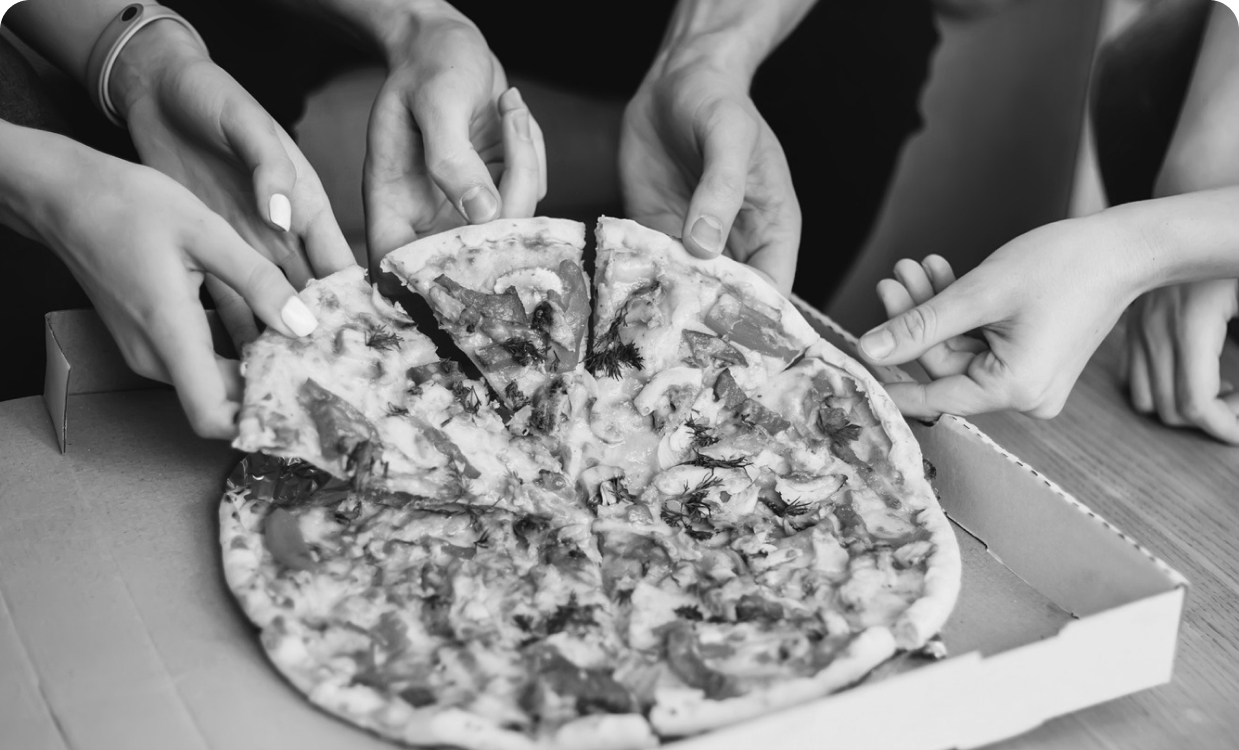The most profitable fast-food franchises of 2025

Fast-food and quick-service restaurant (QSR) franchises have long been a cornerstone of the franchising world. You likely know the iconic examples – McDonald’s, Chick-fil-A, Wendy’s – but there’s more to understanding these profitable powerhouses than memorizing famous names. Perhaps you’re an investor exploring the most promising opportunities for 2025, or you’re simply curious about which brands dominate the market. Either way, this guide will walk you through what makes certain fast-food franchises profitable, why the QSR sector remains so strong, and where we see the best potential in 2025. We’ll also show how you can invest in franchises – including these fast-food juggernauts – without running one yourself.
We’ve updated our earlier piece on the most profitable fast-food franchises to bring you a fresh, more comprehensive look at the landscape. Much has changed over the past year, from explosive growth at certain chicken-focused concepts to the continued dominance of legacy brands leveraging AI-driven ordering, multi-lane drive-thrus, and savvy digital strategies. Below, you’ll find an in-depth review of the leading franchises for 2025 and a deep dive into why the QSR sector keeps investors coming back – sometimes quite literally for a second helping.
How Fast-Food Franchises Became an Investor Favorite
Traditionally, franchising in fast food meant following a proven playbook: established brand, standardized operations, recognizable menu, and built-in demand. Today, that playbook has become even more attractive, thanks to strong consumer demand for convenience, technology that boosts efficiency, and a labor market that incentivizes automation and streamlined operations.
Reports estimate the global QSR market will reach $323.7 billion in 2025, up from $316 billion in 2024. While QSR growth has always outpaced many other industries, the past few years have turbocharged it further. Many brands found ways to innovate – through curbside pickup, specialized digital drive-thru lanes, and AI-powered ordering systems – that keep costs low and traffic high.
Moreover, consumers across every income bracket use fast-food restaurants regularly, whether to grab a budget-conscious burger or a premium smoothie bowl. This broad market reach tends to cushion QSR franchises during economic ups and downs. Even when inflation causes families to pull back on dining at casual or full-service restaurants, they often “trade down” to QSRs, keeping sales robust. And on the higher end, newer premium concepts with cult followings – think Shake Shack or In-N-Out – attract those willing to spend more for perceived quality or nostalgia.
From an investor’s standpoint, fast-food franchising checks a lot of boxes: consistent revenue, brand recognition, and a degree of operational simplicity (limited menus, templated procedures) that lends itself to scale. But not all QSR brands are created equal. Below, we’ll look at which franchises stand out in 2025 for outstanding profitability and growth potential.
What Makes a Fast-Food Franchise Profitable in 2025
Before we dive into the top-performing brands, let’s clarify the criteria that actually predict profitability. While revenue remains a core metric – particularly Average Unit Volume (AUV) – there are other elements that should guide an investor’s decision, especially if you’re scouting which brand might earn you the highest return on a new franchise location.
1. Operational Efficiency
Speed and simplicity still reign. Successful QSRs have found ways to reduce wait times through better kitchen layouts, AI-driven drive-thru ordering, or smaller footprints that don’t compromise on throughput. The less time your staff spends on repetitive tasks – or troubleshooting bottlenecks – the more orders you can process and the more profitable each location becomes.
2. Strategic Real Estate
Location matters as much as ever, but the modern twist is how that real estate is used. Some franchises thrive in suburban areas with multi-lane drive-thrus, others rely on smaller urban footprints with heavy delivery and pickup traffic. Either way, the best brands provide extensive support with site selection and build-out, ensuring franchisees maximize foot traffic and minimize overhead.
3. High Average Unit Volume (AUV)
AUV offers a snapshot of how much revenue a single restaurant typically generates. While AUV isn’t everything – tight margins can swallow high revenues – consistent, above-average AUV often signals strong consumer demand and brand loyalty. Chick-fil-A’s multi-million-dollar AUV has become the gold standard that many up-and-coming chains strive to emulate.
4. Balanced Margins
Food costs and labor expenses can swing quickly in fast food. Franchises that control supply chain costs (often via bulk buying) and leverage technology to reduce labor demands can see EBITDA margins reach into the mid-teens or beyond. Even if a brand boasts sky-high sales, thin margins can hamper long-term profitability, so understanding real operating margins is crucial.
5. Adaptable Leadership & Menu Innovation
The fast-food sector moves quickly. Consumers shift to healthier, more plant-based options – or sometimes revert to comfort foods. Tech that’s cutting-edge today might be standard tomorrow. Brands with leadership teams that pivot fast and support franchisees through these changes are the ones that tend to dominate. Reviewing a franchisor’s track record over the past 12 to 24 months can give you a sense of how they’ll handle challenges and opportunities ahead.
Why the QSR Sector Continues to Thrive
Beyond brand-specific advantages, the QSR industry as a whole shows robust growth and innovation. Demand is consistent (fast food appeals to a wide demographic), technology keeps pushing the boundaries of efficiency, and market saturation can still be managed by focusing on niche concepts or premium offerings. Furthermore, the labor market – while challenging – has led many operators to adopt AI-driven solutions that reduce staffing needs. Add to that the resilience shown by fast-food brands during economic downturns, and you begin to see why so many investors focus on this industry.
One interesting wrinkle for 2025 is the drive towards healthier and sustainable options. Growing segments of consumers, especially Gen Z, prioritize food quality, eco-friendly practices, and transparent sourcing. Established brands that adapt (e.g., by adding a plant-based sandwich or rolling out compostable packaging) can secure a larger share of these younger diners. Even purely indulgent brands – like the ones specializing in crispy chicken or loaded burgers – are exploring how to weave some health or sustainability angle into their menus. New franchises go all-in on this trend. For example, everbowl, specializing in nutritious and customizable acai bowls, smoothies, and other health-focused offerings, has experienced significant growth, boasting over 90 locations across 27 states. This tension between indulgence and healthfulness keeps the QSR sector fresh and open to new competitors.
Our Picks: The Most Profitable Fast-Food Franchises of 2025
Chick-fil-A
Year after year, Chick-fil-A dominates conversations around average unit volume. It’s still the top revenue-per-location brand in the U.S., with non-mall locations averaging $9.4 million in annual sales. That figure becomes even more impressive when you remember these stores are closed every Sunday. Much of Chick-fil-A’s success comes down to process efficiency – military-precise drive-thru operations, heavy staff training, and menu simplicity.
Chick-fil-A’s unique franchise model also plays a role: the initial investment can be surprisingly low (around $10,000), but the franchisor retains significant control and takes a higher royalty and profit share than most. Even with that structure, the individual operator often sees excellent returns, supported by the brand’s vast marketing and operational resources. If you can handle the competition to become a Chick-fil-A franchisee – reportedly tens of thousands of applicants each year – you’ll be plugging into an unstoppable machine that remains the envy of the industry.
Raising Cane’s
Chicken-focused QSRs continue to outperform, and Raising Cane’s exemplifies this trend. The chain’s intense focus on chicken fingers, crinkle fries, and a few simple sides has led to an AUV nearing $6.2 million. Analysts attribute its growth to streamlined operations, high product consistency, and remarkable brand loyalty among younger demographics. In some ways, it echoes Chick-fil-A’s formula – pick one thing (fried chicken) and do it better than anybody else.
While historically more company-owned than franchised, Raising Cane’s is exploring expansion paths that could see more franchising opportunities in select markets. If it does, keep an eye on it as a viable contender for top-tier profitability.
McDonald’s
McDonald’s might not have the highest per-store sales, but it’s the undisputed global heavyweight in total system-wide revenue, poised to exceed $130 billion worldwide in 2025. Its U.S. AUV generally sits around $3.6–4 million. The brand’s longevity, marketing power, and ability to pivot toward new tech-driven approaches have kept franchisees in the black for decades.
Recent years have seen McDonald’s embrace AI to enhance its drive-thrus and leverage its mobile app for loyalty initiatives. These moves have grown same-store sales and further solidified the chain’s grip on the top rung of global QSR. If your goal is joining a brand with decades of proven stability, McDonald’s remains a safe bet – assuming you can meet the higher financial requirements (often $1–2 million or more) and pass their selective vetting.
In-N-Out Burger
Though not franchising at this time – In-N-Out remains family-owned – its success story is worth studying. Average per-store sales hover around $5 million, a phenomenal figure driven by a simple menu, fresh ingredients, and a cult-like following in the American West. In 2025, In-N-Out is expanding to more states, indicating that its brand power can travel well beyond California. If this burger icon ever decides to franchise, you can expect intense competition to secure those first deals.
Panera Bread
On the fast-casual side, Panera Bread offers a counterpoint to the typical “burger and fries” formula, emphasizing salads, sandwiches, soups, and baked goods. Its $3.43 million AUV puts it comfortably in the top echelon of fast-casual leaders. Panera’s loyalty program is one of the most robust in the industry – its coffee subscription alone has kept foot traffic high. Franchisees benefit from a balanced daypart spread (breakfast, lunch, and dinner) and strong brand recognition around health and transparency.
Culver’s
Grounded in Midwestern charm, Culver’s has grown steadily thanks to crowd-pleasers like ButterBurgers and frozen custard. While not as widely recognized nationwide as McDonald’s or Wendy’s, Culver’s is quickly expanding beyond its heartland roots. Recent data pegs Culver’s AUV at around $3.4 million – impressive for a brand that was, until fairly recently, considered more of a regional phenomenon.
Other Names to Watch
Several franchises are either in rapid expansion mode or consistently rank high in system-wide sales. Taco Bell has posted steady global growth and is now recognized for creative menu innovations, while Wingstop’s smaller footprint and focus on digital orders yield strong margins despite more modest AUV. Meanwhile, premium concepts like Shake Shack see high AUV in select urban centers but have yet to prove they can replicate that success in every region. New rapidly growing brands should also be on investors’s radars. Take Hawaiian Bros: the brand has been recognized as a Top 10 Fastest-Growing Chain by Nation’s Restaurant News and was featured on QSR Magazine’s 40/40 List of America’s hottest emerging concepts.
Trends and Opportunities Shaping Profitability
A closer look reveals some powerful currents that will likely influence investor returns in the next few years:
AI and Automation
Brands like McDonald’s and Wendy’s have started using AI-driven voice bots to handle drive-thru orders, cutting labor costs and speeding up service. Fully automated fryers or burger-flipping robots are moving out of pilot programs and into everyday kitchens, boosting consistency and throughput.
Healthy & Sustainable Offerings
Despite the strong appetite for comfort foods, a growing percentage of QSR customers – particularly Gen Z – want cleaner, healthier, and more eco-friendly choices. Chick-fil-A tested a cauliflower sandwich in 2024, and it quickly drew attention from plant-based eaters. Meanwhile, broader commitments to compostable packaging, renewable energy in stores, and responsibly sourced ingredients all resonate with diners seeking to align their values with their wallets.
Digital Ordering & Loyalty
It’s almost a given at this point that any top-performing franchise has a robust mobile ordering platform and a loyalty program. The data gleaned from these programs drives targeted promotions and can significantly increase average ticket size. This digital ecosystem can become a double-edged sword – some smaller franchises struggle with the tech investment. But for well-capitalized brands, these systems are paying off with higher margins and stronger repeat business.
Value Menus vs. Premium Upsells
High inflation has forced many QSRs to raise prices. The winners in this scenario are the brands that can both push a value menu (to keep cost-conscious customers) and upsell premium items (to capture those seeking indulgence). Some franchisees note that customers who come in for an affordable offer often end up adding sides, desserts, or limited-time premium items, driving the transaction total up.
Making Sense of Franchise Investment Costs
If you’re new to franchising, keep in mind that the franchise fee is only the first expense. Most QSRs come with total startup costs that can exceed $1 million, reflecting real estate, build-out, equipment, licenses, and training. Meanwhile, ongoing royalties usually hover in the 4–6% range of gross sales, plus an additional 2–5% for marketing. Some brands have unique structures – Chick-fil-A is famously inexpensive to start (just $10k), but the operator effectively rents the business from corporate, which takes a higher share of the revenue.
Those costs can be daunting if you plan to self-fund. Many new owners turn to SBA loans or partner with investors to meet the net worth or liquidity requirements demanded by major franchises. And that’s where fractional investing comes into play.
Fractional Franchise Investing with FranShares
Not everyone has the capital, time, or desire to run a fast-food location themselves – no matter how profitable it might be. FranShares was founded to solve exactly that problem: to let individuals invest in a diverse portfolio of franchises without worrying about site selection, day-to-day management, or employee scheduling.
Through FranShares, you can access passive, fractional franchise ownership with initial investments as low as $500, which drastically lowers the barrier to entry. This model benefits investors in several ways. You get:
● Passive Income: Returns can be distributed after the typical 12–18-month ramp-up period for new franchise locations.
● Diversification: By spreading investments across multiple franchises – some in fast food, others in services or emerging sectors – you reduce overall risk.
● Equity Appreciation: As these franchised locations gain value over time, you share in the upside.
● Professional Management: Our team handles all the heavy lifting: vetting top-tier franchisors, negotiating terms, and managing operations to optimize growth.
FranShares also leans heavily on research and data, ensuring we only partner with reputable brands that demonstrate strong performance fundamentals. While no investment is risk-free, fractional franchising through FranShares can be a convenient pathway into the lucrative QSR world. Instead of finding $1 million to build a store from scratch or wrangling the intricacies of daily operations, you can participate at a fraction of the cost, guided by experienced franchising experts.
A Final Word on the Fast-Food Future
The fast-food industry’s evolution in 2025 reflects the best of what franchising can offer: reliable consumer demand, brand power, and efficiency gains from cutting-edge technology. Even as inflation, labor pressures, and shifting consumer tastes create headwinds, well-managed QSR concepts consistently show that they can adapt and thrive. More than ever, the lines between fast food, fast casual, and convenience dining continue to blur, allowing innovators to capture new markets and older giants to reinvent themselves.
For investors, the opportunity remains strong, but due diligence has never been more important. High AUV or strong brand recognition doesn’t always guarantee success. Pay close attention to each franchisor’s cost structure, market saturation, and operational technology. Look at how well they respond to economic pressures and how they plan to expand or pivot. And remember that “most profitable” isn’t a fixed crown – market conditions change, and upstart concepts can sometimes outmaneuver legacy players if they spot a trend early.
Whether you’re considering a major personal investment in a single brand or you’re exploring more passive approaches like fractional franchise ownership through FranShares, there’s no doubt that the QSR industry will continue to capture both headlines and consumer dollars. The allure of fast-food franchising isn’t going anywhere – and if anything, it’s poised for another surge as technology, customer preferences, and bold new concepts reshuffle the competitive deck.
If you’d like to learn more about how FranShares can help you tap into these thriving franchises – without taking on the day-to-day management – explore our website. We have resources that explain how fractional investing works, what kinds of franchises we target, and how you can add this compelling asset class to your portfolio. The fast-food future looks bright, and we’re here to help you get a piece of it.
To find out more about fractional investing in franchises or to sign up for an account, visit us at FranShares. We look forward to helping you access the many benefits of this thriving, ever-evolving industry.


